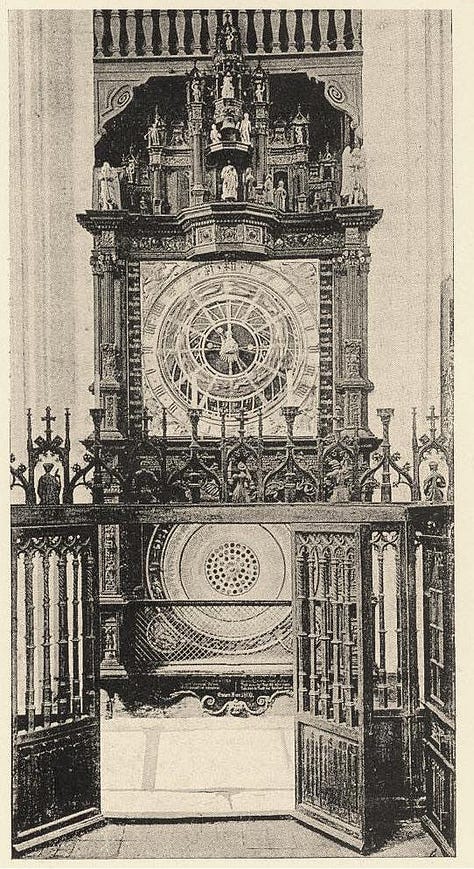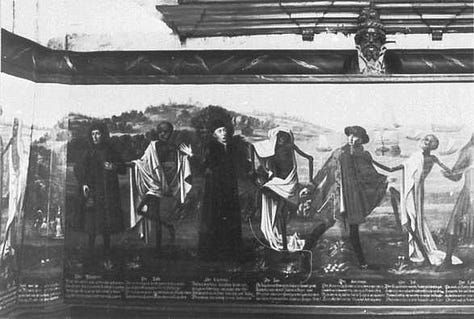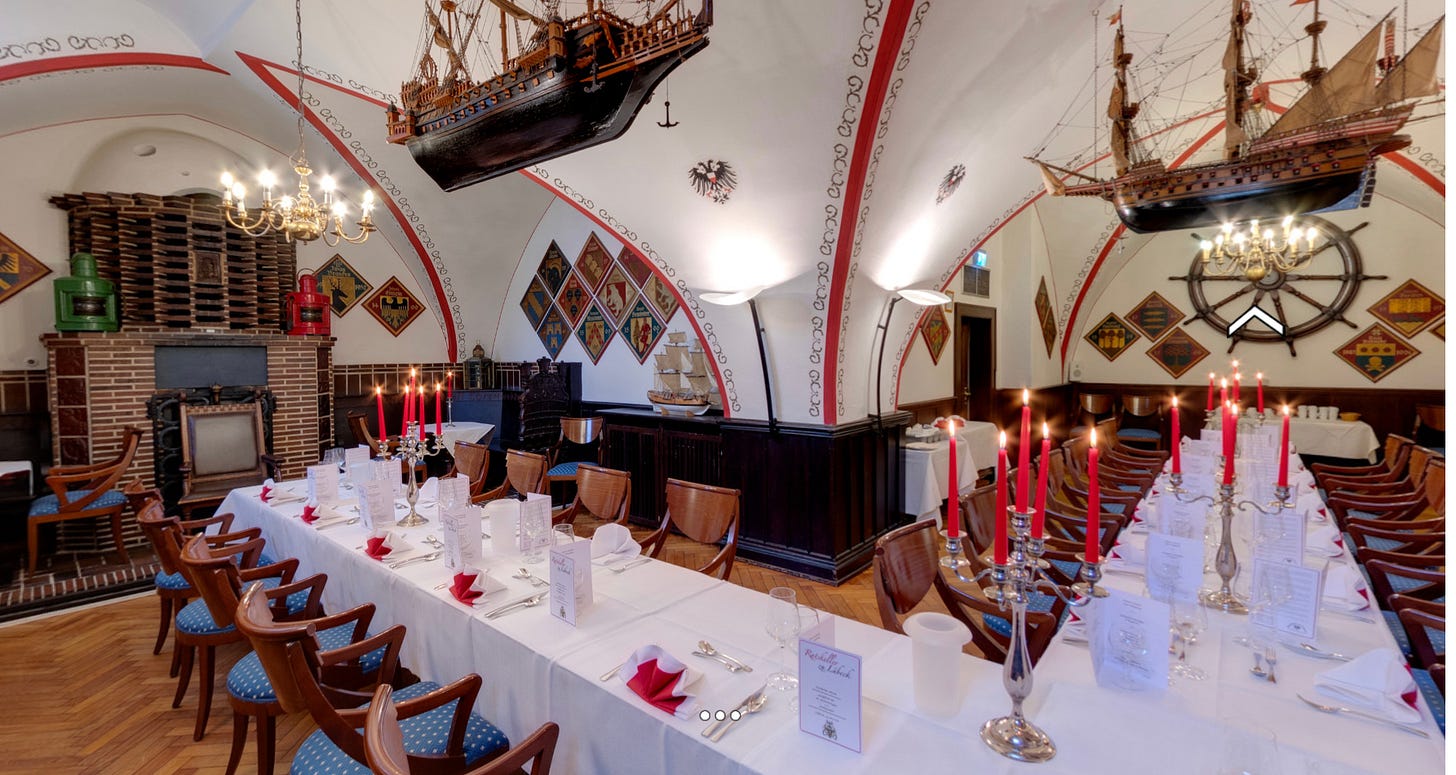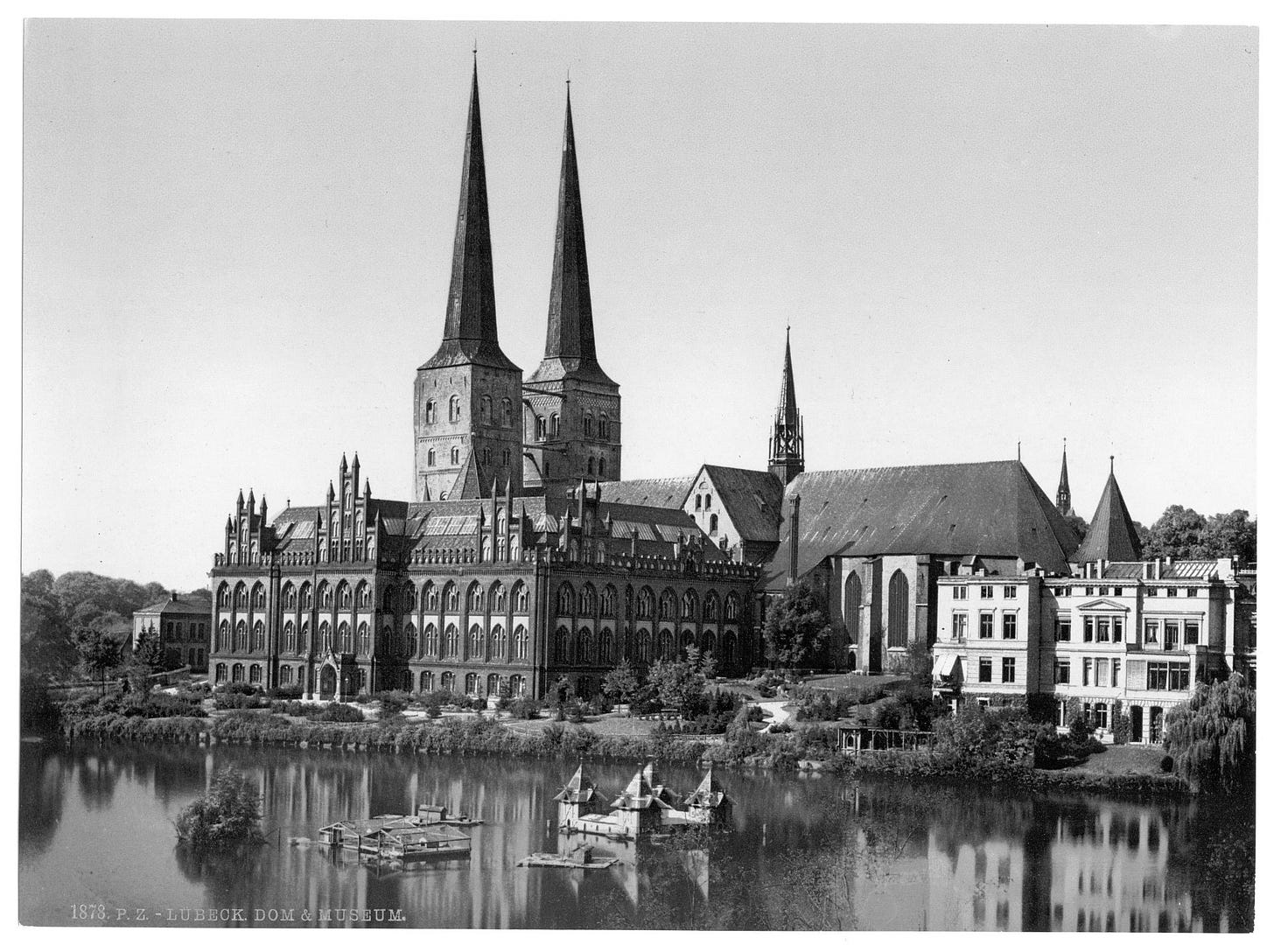July 5th: “Left Hamburg about 11 AM for Lubeck”
The author of today’s diary entry is an anonymous American woman travelling through Europe. In 1878 on this day, she went to visit some historical places in Lübeck, Germany.
Today’s post is the result of a very rabbit hole esque research process for me. Something about this, the diary of an anonymous woman travelling through Europe, gripped me, maybe it was the thought that I might be able to find out more information about her, perhaps even her identity. Unfortunately that remains a mystery (at least for now!), but through my research I was able to gather some photos and virtually recreate our diarist’s day of tourism in Lübeck, Germany.
Let’s start with her journey from New York to Europe. She embarked on the Devonia, a steamer from the Anchor Line, on April 6th, 1878. She would arrive in Glasgow later in the month (I haven’t been able to pinpoint an exact date from her diary yet). She would continue from there to various locations in Europe.

Left Hamburg about 11 AM for Lubeck where we stopped about three hours walked through the town to the Marienkirche one of the most curious old churches I have yet seen queer monuments on all the pillars. Behind the altar is a wonderful clock which when the hour strikes 7 old electors appear in procession & bow to a figure of Christ. In a chapel is a curious painting called the “Dance of Death” lords & ladies & bishops with death dancing between them.
The Marienkirche (St. Mary’s Church) in Lübeck was built between 1265 and 1352. Our diarist would have seen it completely differently than we’d see it today, as almost the entire church was destroyed by an RAF raid in 1942. Many of the ‘queer monuments on all the pillars’ she mentions were made of wood, and lost in the fire. The same goes for the astronomical clock behind the altar, the first version of which was built in the 15th century. The Dance of Death (or Danse Macabre) painting was also destroyed (this was one of my favourite rabbit holes from this research process - see further reading for more!).



From the church went to the Rathaus the wood carvings of the doors & fireplaces were some 400 years old. In the cellar took our dinner a very ancient restaurant with a curious inscription over the fireplace. We(?) went to a sailors room which was hung with models of ships & all manner of sea things.
Our diarist and her companions had dinner in the Admiral’s room of the Ratskeller restaurant, which doesn’t seem to have changed much from then. Unfortunately I can’t find any close ups of the inscription over the fireplace that she mentions, but it might be a terracotta by Statius from Düren.

Then to the Cathedral where are curious tombs of the Patrician families of Lubeck and a railing said to have been made by the devil.
The Cathedral (or Lübecker Dom) was built in 1173, and like the Marienkirche severely damaged in the 1942 air raid.
I couldn’t find anything about a railing made by the devil, but I did find a legend that relates to the Marienkirche instead of the Cathedral. The legend tells that the devil helped build the Marienkirche, after he was tricked into thinking he was working on a wine bar rather than a church. The church and cathedral aren’t that close to each other, but I feel like these stories must be related somehow.
At five PM took the steamer for Copenhagen through the North Sea. I can smile(?) At 8PM with the sun shining bright. The stewardess came in & arranged something to keep us in our berch, the ship rolled very much through the night.
Note: my own transcription, the question marks indicate words that I’m not quite sure about. No punctuation added.
Read the full diary here.
For more information about the Dance of Death/Danse Macabre painting, see here. Its history is very interesting; the original text, written around 1463 amidst plague outbreaks, was changed drastically in 1701.
For more information about the Ratskeller, see here.
Also, stay tuned for more entries from this diary, and perhaps a continuation of my investigation into who its author was.







